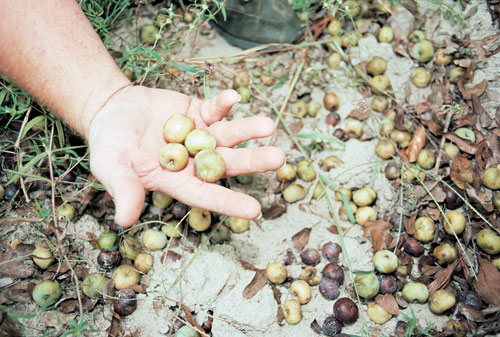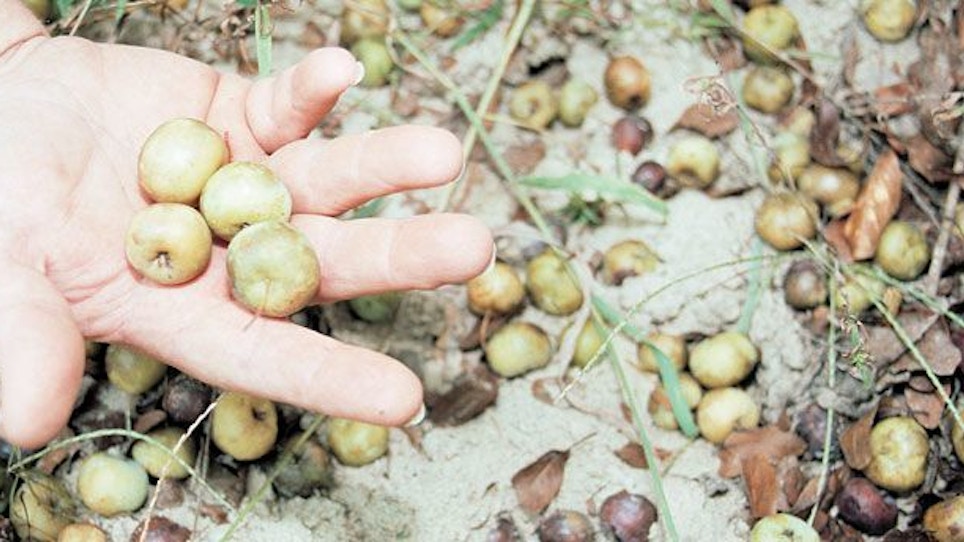Rambling Rut
 But bowhunting Dixie deer is different. Take, for instance, the rut. In much of the North, the rut is well-defined, occurring sometime from the last week of October to mid-November. But that is far from true in Dixie, and bowmen who want a prime piece of Southern buck hunting better know that the rut is a very unusual event south of the Mason-Dixon line.
But bowhunting Dixie deer is different. Take, for instance, the rut. In much of the North, the rut is well-defined, occurring sometime from the last week of October to mid-November. But that is far from true in Dixie, and bowmen who want a prime piece of Southern buck hunting better know that the rut is a very unusual event south of the Mason-Dixon line.
For example, in extreme South Florida, bucks rut in summer—July and August, if you can believe that—with fawns born in February and March. Yet in Florida’s Panhandle, west of Tallahassee to Pensacola, bucks are rutting through February. In nearby Alabama, January is the heralded whitetail rut, a month when seemingly all of North America’s whitetail hunters descend on the Cotton State. While in next-door Middle Georgia, late October and early November is the time when buck necks swell.
Who can authoritatively explain, then, why bucks are pawing the ground and making scrapes on the barrier islands of coastal Georgia in early September, while only 200 miles south in central Florida the rut doesn’t happen until October? Half that distance north, in southeast South Carolina, bucks rut in November. In Mississippi, the rut is rocking in December.
Anyone with the time, money, and inclination, could hunt rutting bucks from September through February somewhere in the South. However, keep in mind that hot weather impacts the rut. During unseasonable hot, dry weather, bucks will not be chasing does.
Sweat And Kitty Litter
Hot Southern weather, indeed, impacts whitetail archery success. This is why cover or masking scents are essential. Hunter perspiration is common after walking rough, thickly vegetated terrain, and while placing treestands. A hunter whose clothing is saturated with perspiration is easily winded by scent-savvy whitetails. A strong, quality masking scent doused liberally on hunting boots, on a stand base, and around surrounding vegetation is a standard practice.
I’ve had excellent Southern deer bowhunting success using a natural fox urine cover scent. Raccoon urine is a usable substitute, but strong, fresh, horribly pungent fox urine is unbeatable. I put it on my boot soles just before entering the woods. Spraying it around a tree trunk or nearby bushes is smart, too. Often I’ve removed the screw-on lid from fox urine and leaned the container against my treestand tree. The fox urine inside the container evaporates up-and-out, helping cover my scent.
Fox urine also is a curious, attractive scent to Dixie deer. I’ve had dozens of whitetails track my boot scent to trees I’ve hunted from, and over the years I’ve arrowed many deer—including some good bucks—that have come directly to my tree and put their noses at the top of my fox urine bottle, glass containers I often had held in my bare hands less than 30 minutes previously!
Bowhunting in clean, scent-free clothes is standard procedure. Smart bowmen never wear hunting clothes into restaurants, lodges, or in other places where human and other unnatural odors abound. Some sportsmen change into bowhunting garb just before entering the woods. If a long walk in hot weather is mandated, they carry camouflage with them, changing just before reaching the hunt site. Old, sweaty clothes are sealed in a bag and left downwind well away from a hot-weather hunting location.
One ingenious Old South method of cutting down body odor and perspiration is to “dust” with a 50-50 mixture of kitty litter and baking soda that’s placed inside a knotted sock. This is an especially good technique after a long, sweaty walk, or following a rugged bout in the tree tops in broiling sun while placing a stand. The sock is used to “thump” or dust the bare chest, legs, and back, which neutralizes odor and dries sweat.
Many Dixie deer move around only at night because it’s so hot and dry during the day. Sometimes, when it’s really hot, heavy bucks (or even old, seasoned does) just stand up in their bedding thickets and move just a few yards to feed. They never really come out of the thickets into the open sun; the deer don’t want to leave the cool shade.
You’ve got to be on your toes in such thick Southern places because deer can be right under your stand and walk by open shooting lanes before you realize they’re there. You must find or create good open places to shoot. Careful trimming of shooting lanes with pruning shears is smart. And when you’re in your stand, make a mental picture of where a deer should move along a trail, and where it will offer a shot. Be sure to note small limbs and branches near a grown-over shooting lane because when light fades you can’t see even full-foliage branches.
Visiting bowmen used to walking and scouting for “hot” oak trees dropping acorns to concentrate deer often are disappointed in Dixie. Even cultivated crops like soybeans and corn may not be much to the liking of Southern deer in hot weather. Often their choice foods are natural browse like greenbrier, honeysuckle, wild grapes, apples, watermelons, persimmons, and honey locust seedpods.
White oaks and red oaks drop choice acorns that Dixie deer relish. One oak variety often overlooked, yet provides a vitally important food source for Southern whitetails, is the water oak. Not only does this tree drop acorns much earlier than many other oaks, but it’s a consistent and heavy mast producer that thrives in wet, thick areas Dixie deer prefer in bow season. Water oaks are widely distributed from West Virginia to Florida to Mississippi.
While the South never will have the reputation for producing the monster deer that Kansas or Saskatchewan, Illinois or Iowa regularly do, for me, Dixie is the place to be for bowhunting whitetails. The seasons are long, limits liberal, and there are bucks big enough to get any serious archer’s attention.






